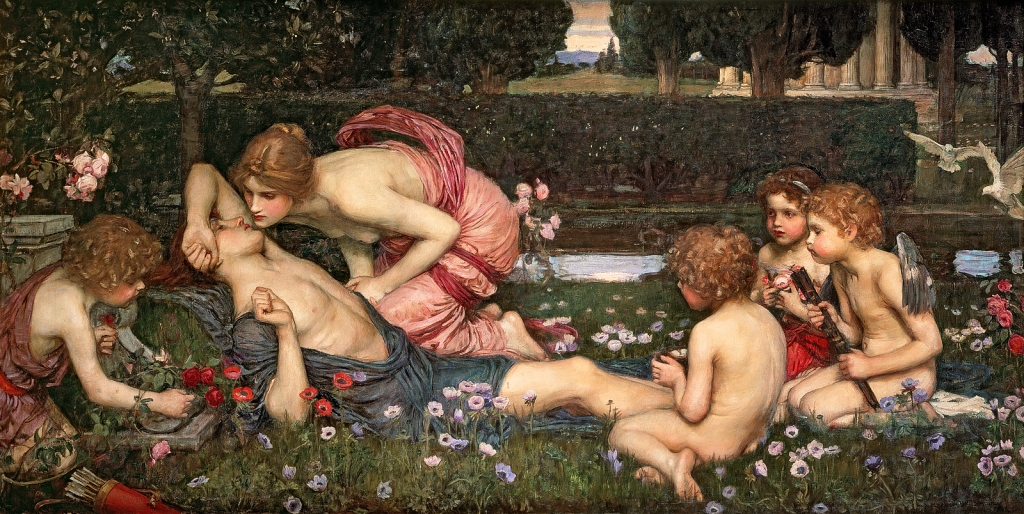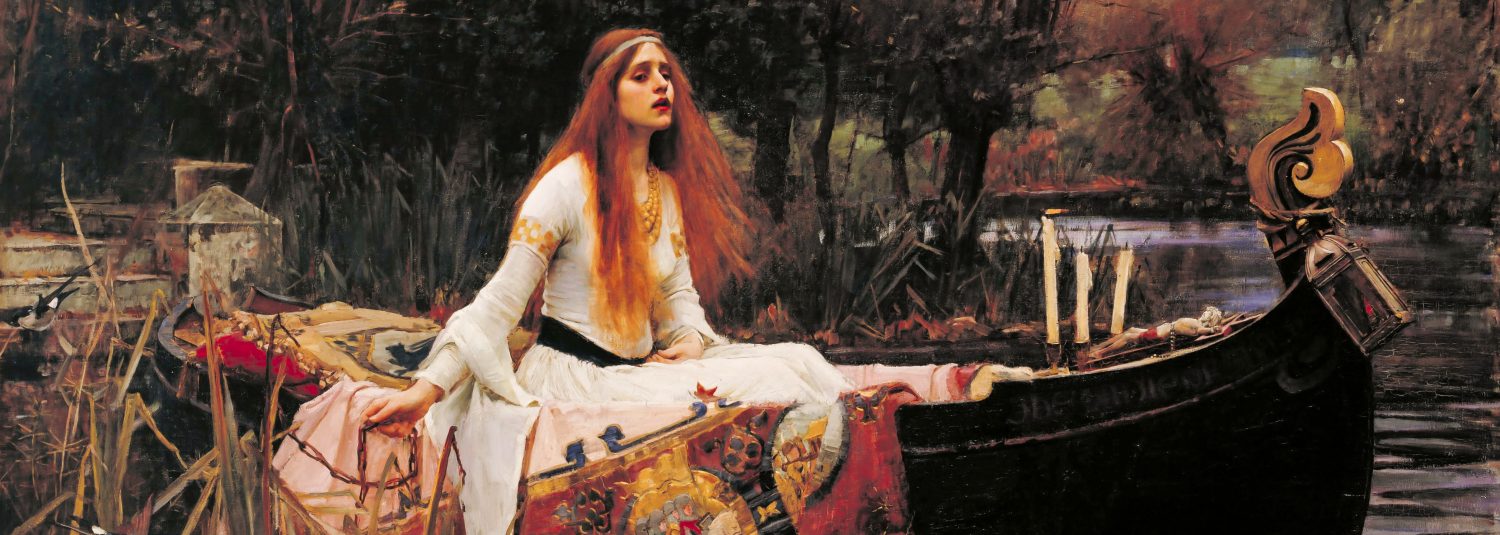
Waterhouse’s great mythological subject The Awakening of Adonis (Collection of Lord Lloyd-Webber) was painted in 1899, but was not finished in time to send to the Royal Academy that year, and was therefore held over to the summer exhibition of 1900. On that occasion it was recognised as one of the artist’s most powerful and characteristic works and one that aimed, in the words of one reviewer, ‘at representing the passionate emotions of an historic tragedy in a highly dramatic fashion’ (Athenaeum, 1900, p.568). The painting may be seen as one in a series of spectacular and challenging works by Waterhouse, each of which show moments of fateful confrontation between the gods and mortals of Greek and Roman legend, and may be compared to Hylas and the Nymphs (Manchester City Art Gallery) and Flora and theZephyrs (offered in these rooms, 6 November 1996, lot 307), of 1896 and 1897 respectively. The series ended with the painting Nymphs Finding the Head of Orpheus (private collection), exhibited in 1901, the year after The Awakening of Adonis.
The Awakening of Adonis takes its subject from the ancient fable, retold by Apollodorus, Hyginus and Ovid, which tells how Adonis was the child of Myrrha and her father Theias, the king of Syria. The goddess Venus had encouraged this incestuous union and, when Adonis was born from the trunk of the myrrh tree into which his mother had been transformed, it was she who took care of him, entrusting him to Persephone, goddess of the Underworld. The child grew up to be so beautiful that Persephone found that she could not bear to return him to Venus, leading to a dispute between the two. This was settled by Zeus, who decided that Adonis should spend four months of the year with Venus and another four with Persephone. The remaining third of the year he might spend with whichever of the two goddesses he preferred. Venus used the power of magic to cause him to want her rather than Persephone. In Waterhouse’ painting the beautiful boy is awakened with a kiss from Venus in her Elysian pleasure-garden. Cupid, the god of love, blows on a torch to rekindle a flame, and is accompanied by a band of putto holding flowers. White doves take to the air and the garden is fecund with roses (symbols of Venus) and anemone flowers that were said to grow from the blood of the dying Adonis. The mythological legend of Adonis, as represented in the present painting, is therefore symbolic of the renewal of life, vigour, and desire at the arrival of spring.
– From Sotheby’s catalogue.
